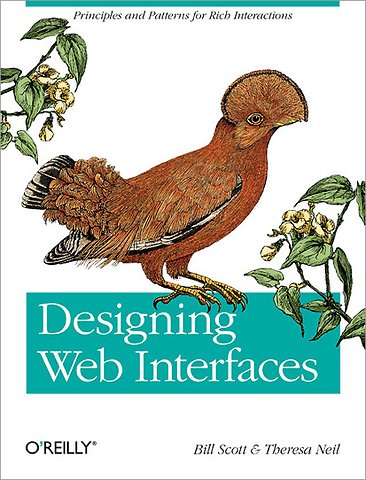


Bill Scott is director of UI Engineering at Netflix in Los Gatos, CA, where he plies his interface engineering and design skills.
Meer over de auteursDesigning Web Interfaces
Principles and Patterns for Rich Interactions
Samenvatting
Want to learn how to create great user experiences on today's Web? In this book, UI experts Bill Scott and Theresa Neil present more than 75 design patterns for building web interfaces that provide rich interaction. Distilled from the authors' years of experience at Sabre, Yahoo!, and Netflix, these best practices are grouped into six key principles to help you take advantage of the web technologies available today.
With an entire section devoted to each design principle, 'Designing Web Interfaces' helps you:
- Make It Direct-Edit content in context with design patterns for In Page Editing, Drag & Drop, and Direct Selection
- Keep It Lightweight-Reduce the effort required to interact with a site by using In Context Tools to leave a "light footprint"
- Stay on the Page-Keep visitors on a page with overlays, inlays, dynamic content, and in-page flow patterns
- Provide an Invitation-Help visitors discover site features with invitations that cue them to the next level of interaction
- Use Transitions-Learn when, why, and how to use animations, cinematic effects, and other transitions
- React Immediately-Provide a rich experience by using lively responses such as Live Search, Live Suggest, Live Previews, and more
'Designing Web Interfaces' illustrates many patterns with examples from working websites. If you need to build or renovate a website to be truly interactive, this book gives you the principles for success.
Specificaties
Over Theresa Neil
Inhoudsopgave
Preface
Principle One: Make It Direct
1. In-Page editing
2. Drag and drop
3. Direct selection
Principle Two: Keep it Lightweight
4. Contextual tools
Principles Three: Stay on the page
5. Overlays
6. Inlays
7. Virtual Pages
8. Process flow
Principle Four: Provide and invitation
9. Static invitations
10. Dynamic Invitations
Principle Five: Use Transitions
11. Transitional Patterns
12. Purpose of Transitions
Principles 6: React immediately
13. Lookup patterns
14. Feedback Patterns
Epilogue: Principles and patterns for rich Interaction
Index
Anderen die dit boek kochten, kochten ook
Net verschenen
Rubrieken
- aanbestedingsrecht
- aansprakelijkheids- en verzekeringsrecht
- accountancy
- algemeen juridisch
- arbeidsrecht
- bank- en effectenrecht
- bestuursrecht
- bouwrecht
- burgerlijk recht en procesrecht
- europees-internationaal recht
- fiscaal recht
- gezondheidsrecht
- insolventierecht
- intellectuele eigendom en ict-recht
- management
- mens en maatschappij
- milieu- en omgevingsrecht
- notarieel recht
- ondernemingsrecht
- pensioenrecht
- personen- en familierecht
- sociale zekerheidsrecht
- staatsrecht
- strafrecht en criminologie
- vastgoed- en huurrecht
- vreemdelingenrecht





